Types and Formats
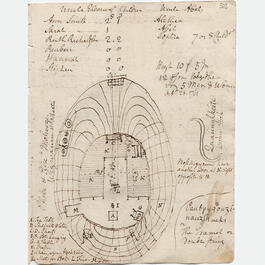 Plan of Eliza and Phoebe Moheage's Wigwam by Ezra Stiles from Itineraries I, page 503, Ezra Stiles Papers. Beinecke Rare Book and Manuscript Library, Yale University Library. |
Archives and ManuscriptsManuscript and archival materials are unique resources that can usually be found in only one library or institution (though digital copies or copies on microfilm or microfiche may be available elsewhere). The term archives, when it refers to documents, as opposed to a place where documents are held, refers to the records created or received and maintained by an institution or organization in the course of its operations. The term manuscripts, which originally referred to handwritten items, now also refers to a body of papers of an individual or a family. Archive may also be used for a collection of personal or family papers where the collector attempts to acquire all records and works that a person or family created. Both terms can encompasses a broad array of documents and records of numerous formats and types. Archival records or manuscripts may include business and personal correspondence, diaries and journals, legal and financial documents, photographs, maps, architectural drawings, music manuscripts, printed music, objects and artifacts, film, sound recordings, literary works, and digital media. Find out more about Eliza and Phobe’s Wigwam in the Ezra Stiles Papers. |
|
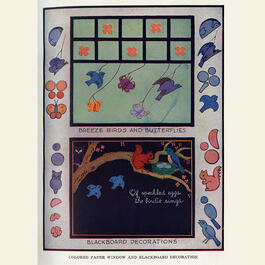 Pedro J. Lemos. Applied art, drawing, painting, design and handicraft. Arranged for self-instruction of teachers, parents, and students. 1920. Robert B. Haas Family Arts Library, Yale University Library. |
Books and PamphletsDetermining what is a primary source can be tricky, and in no case is this more apparent than with books and pamphlets. From one vantage point, books are the quintessential secondary source: scholars use primary source materials such as letters and diaries to write books, which are in turn secondary sources. However, books can also be a rich source of primary source material. In some instances, as in the case of published memoirs, autobiographies, and published documents, it is easy to determine when a book functions as a primary source. However, even secondary source materials can function as primary sources. More about Applied Art, Drawing, Painting, Design and Handcraft by Pedro J. Lemos. View all available Images from the Faber Birren Collection of Books on Color. |
|
 Stock data, including a candlestick chart and pricing information. |
DataData consists of information organized for systematic analysis and are now usually stored in digital form, although paper and tape data sets still exist and are useful. Data are an essential primary source for science and social science research, and are often created by organizations in the normal course of their operations or can be collected by researchers or others interested in particular topics. Data are often gathered from experiments, simulation and modeling, or various types of observation including geospatial, climate, and survey information. Browse and filter data sets. |
|
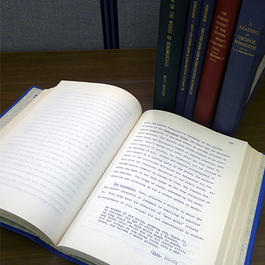 Bound Yale dissertations. Manuscripts and Archives, Yale University Library. |
DissertationsDissertations are book-length studies based on original research and written in partial fulfillment of requirements for the doctoral degree. Although usually secondary sources, dissertations can themselves be primary sources or can be extremely helpful in identifying and locating primary sources. Dissertations that function as primary sources might be edited versions of texts, or a doctoral thesis could be used to analyze the influence of a professor on a generation of graduate students and, by extension, on the teaching and writing in a discipline over a period of time. Because a dissertation is based on original research, its bibliography will contain references to primary sources used by the author and can often lead to manuscripts, diaries, newspapers, and other primary material of interest. Find out about Dissertations and Theses at Yale University or search the ProQuest Dissertations &Theses Global database. |
|
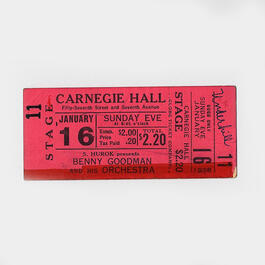 Performance of Benny Goodman and his Band at Carnegie Hall: Ticket stub, January 16, 1938. The Benny Goodman Papers, MSS 53 Irving S. Gilmore Music Library, Yale University Library. |
EphemeraEphemera are primary source materials that are often associated with temporary or short-lived use in everyday life, such as cards, tickets, and labels, but can also include documents that are meant to be saved, like banknotes and marriage certificates. Generally, ephemera are primary sources that are incidental, transient, and unselfconscious, and while we often associate the term with paper, the category can also include digital ephemera, like social media status updates. An important part of their value as primary sources is the improbability of their survival. Learn more about this Benny Goodman concert ticket. |
|
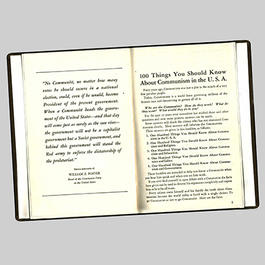 U.S. House of Representatives. Committee on Un-American Activities. 100 Things You Should Know About Communism Series (Washington, D.C.: U.S. House of Representatives, May 14, 1951). Marx Science and Social Science Library, Yale University Library. |
Government DocumentsA government’s documents are direct evidence of its activities, functions, and policies. A wide range of primary sources are found in government documents: the hearings and debates of legislative bodies; the official text of laws, regulations, and treaties; records of government expenditures and finances; statistical compilations such as census data; investigative reports; scientific data; and many other sources that touch virtually all aspects of society and human endeavor. While the United States government is one of the largest publishers in the world, government documents are also produced by regional, state, and local governments, and by international bodies such as the United Nations and the European Union. These institutions typically provide publications to designated depository libraries to ensure ongoing public access to government information. Yale’s Marx Library serves as a repository for documents from the United States federal government. More about 100 Things You Should Know About Communism |
|
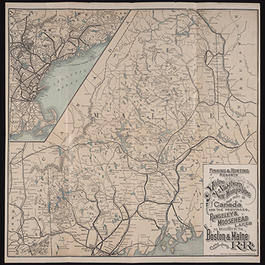 The direct route to the fishing and hunting resorts of New Hampshire, Maine, and Canada: Lake Winnipesaukee, Rangeley Lakes, Lake St. John, Lake Megantic. (Boston : R. A. Supply Co., May 3, 1897). Beinecke Rare Book & Manuscript Library. |
MapsMaps are created in particular cultural contexts by individuals as visual and textual representations of place and landscape. Just as manuscripts or art are subjective, maps have a point of view because they are representations of the world as seen through the eyes of the mapmaker. They can demonstrate political, social, or physical geographic change over time. Additionally, they offer insight into the people who made them and the time period in which they were created and used. Maps can also function as secondary sources because they may draw on information from other maps, data sets, or primary sources of information. More about The direct route to the fishing and hunting resorts of New Hampshire. |
|
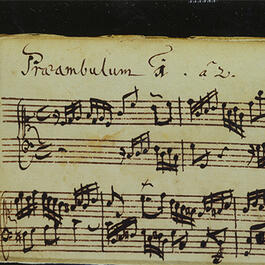 Bach, Johann Sebastian, 1685-1750. Preambulum 1 in C Major, BWV 772, from the Clavier Büchlein vor Wilhelm Friedemann Bach: angefangen in Cöthen den 22. Januar Ao. 1720. Beinecke Rare Book and Manuscript Library, Music Deposit 1, f36v. |
Music ScoresMusic scores record directions for performing music. Scholars study scores to better understand the construction of a piece of music, particularly complex music for many instruments or voices, as well as to gain insight into the performance practice of earlier times, or a composer’s original intentions. In considering whether a score is a primary source, the researcher must determine how close it is to the original composition of the musical work; copyists’ manuscripts and early editions may preserve music that would otherwise be lost, whereas modern editions may be fairly far removed from the composer’s intentions. Ideally, autograph manuscript sketches and scores, or editions that the composer approved exist and can inform editors, scholars, and performers. Contemporary composers frequently compose using computer programs, and their drafts will be in digital form. The term sheet music, which is often used to refer to printed music, more specifically denotes a short vocal or instrumental work, published separately. Learn more about Clavier-Büchlein vor Wilhelm Friedemann Bach : angefangen in Cöthen den 22. Januar Ao. 1720. Browse and filter music scores in the library’s catalog. |
|
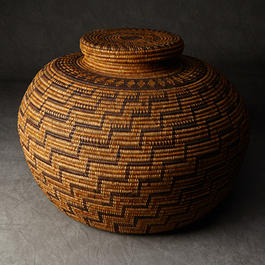 Coiled Basket with Cover, Chumash "Mission" Indians, California. Peabody Museum of Natural History. |
Objects and ArtifactsOnce functional objects used by people, artifacts convey important information about the lives and histories of peoples. Artifacts are three-dimensional and, unlike books and manuscripts, can be either human-made or naturally occurring. They also can be found in archival collections and papers of individuals and families. While all collected artifacts are deemed as having documentary value, some are valued for their intrinsic worth, others for their artistic merit, and others for their historical significance or scientific value. Artifacts commonly used for research include:
Learn more about the Coiled Basket with Cover. |
|
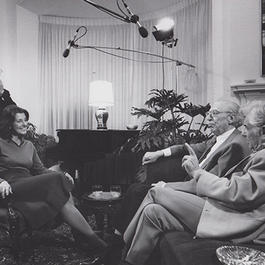 Oral History of American Music's Founder Vivian Perlis interviewing Aaron Copland and Leonard Bernstein (c. 1979). Oral History of American Music, Yale University Library. |
Oral HistoriesOral history interviews and audiovisual memoirs provide important perspectives for scholars and researchers. Since tape recorders became common in the 1950s, oral history projects of many kinds have proliferated, ranging from the “man-on-the-street” type of interview to formal presidential archives. Oral history projects are often centered on a theme, such as Yale’s Oral History American Music project, or Yale’s Fortunoff Video Archive for Holocaust Testimony. Browse and filter oral history and holocaust testimony in the library’s catalog. |
|
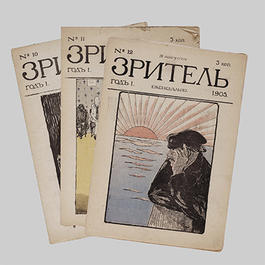 Zritel’, g. 1 no. 11-13, published in Saint Petersburg, Russia, 1905. Beinecke Rare Book and Manuscript Library, Yale University Library. |
Serials: Newspapers, Journals and MagazinesA serial is a publication, such as a magazine, newspaper, or scholarly journal, that is published in ongoing installments. Like books, serials can function both as primary sources and secondary sources depending on how one approaches them. Age is an important factor in determining whether a serial publication is most useful as a primary or a secondary source. For instance, an article on slavery in a recent issue of the Journal of Southern History should be read as a secondary source, as a scholar’s attempt to interpret primary source materials such as ledgers, diaries, or government documents in order to write an account of the past. An article on slavery published in the Journal of Southern History in 1935, however, can be read not only as a secondary source on slavery but also—and perhaps more appropriately—as a primary source that reveals how scholars in the 1930s interpreted slavery. See the online version of Zritel’, g. 1, no. 12 or the catalog record with links to all digitized volumes. Browse and filter newspapers, journals, and magazines in the library’s catalog. |
|
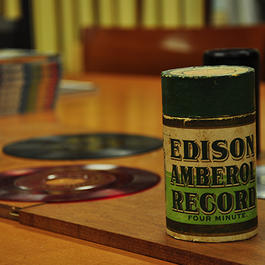 Combination of flat disks and cylinders spanning the late-19th to the mid-20th century. Yale Collection of Historical Sound Recordings, Yale University Library. |
Sound RecordingsSound recordings include not only music but also the spoken word—poetry, plays, conversations, speeches, and news broadcasts. Recordings capture historical performances, discussions, and presentations providing direct testimony from the past. Listening to a recording provides the opportunity to understand not only what is being conveyed but also how it is being conveyed, giving access to tone, manner, and style. Listen to some of our oldest disc recordings in the Berliner Gramophone Disc Collection. Browse and filter sound recordings in the library’s catalog. |
|
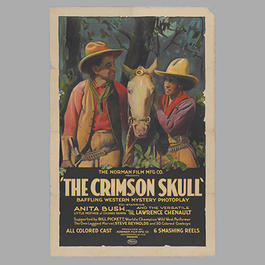 Norman Film Manufacturing Company. The Crimson Skull. Beinecke Rare Book and Manuscript Library, Yale University Library. |
Visual MaterialsThe term “visual material” refers to any primary source in which images, sometimes in conjunction with words or sound, are used to convey meaning. Some common and useful types of visual materials include:
Any of these materials can provide valuable information to a researcher. Factual information can often be extracted from visual materials, while their subjective nature provides insight into how people see themselves and the world in which they exist. See a digital version of The Crimson Skull. |